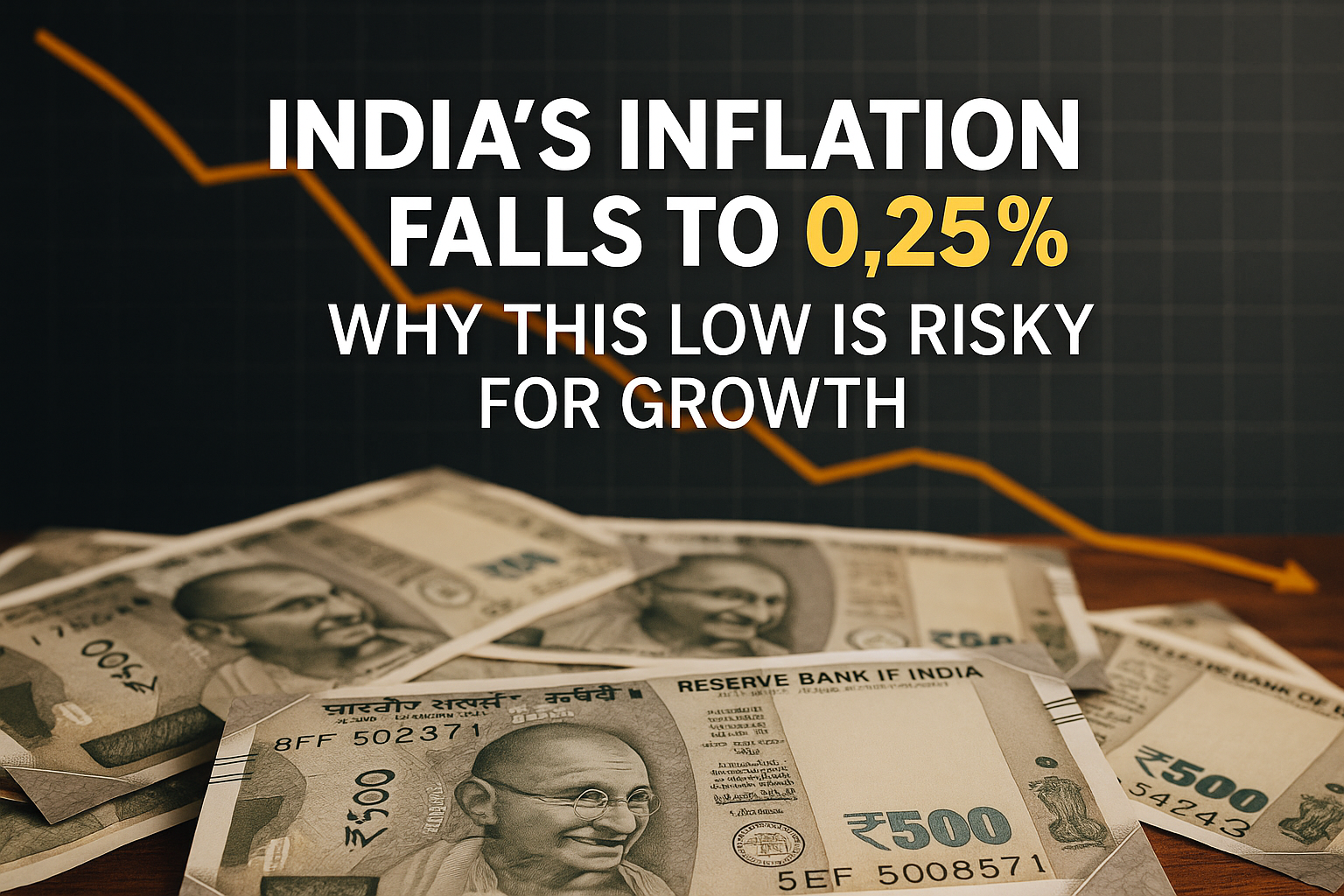Announcement: Lorem ipsum dolor sit amet, consectetur adipiscing elit. Donec et quam blandit odio sodales pharetra.
Inflation 0.25% is less of relief and more of a warning signal
For the month of October 2025, India retail inflation came in at 0.25%. That is the lowest level in the 2013 series. Very low levels of CPI inflation can often be a double-edged sword. Here is why!

Table of Content
Economy needs some inflation
The RBI had set its inflation target for the next 5 years between 2% and 6%. The preferred median inflation is 4%. The current inflation at 0.25% in the month of October is way below that. It has been a story of falling inflation since CPI touched a high of 6.21%, in Oct-24. For a long time, the RBI and the center struggled to ensure price stability and reduce the inflation level. With inflation falling to 0.25%, there is a brand-new challenge. It is the consumer demand!
What is driving inflation lower?
There have been several factors that led inflation lower. The first was the better-than-expected Kharif output and likely strong Rabi crop this year. That is well factored into food inflation at -5.02%. The other reason is the cut in GST rates across the board. That is visible in the last two months, although that is likely to be a one-time impact. That is where the real question arises. Does Kharif abundance and GST cuts justify a fall in inflation to 0.25%. The fear is that there is an element of demand exhaustion. As macros get uncertain, consumers may be putting off their spending decisions. That is what typically causes slowdown.
Beware the vicious cycle
What the government needs to bear in mind is that the dividing line between low inflation and deflation can be quite thin. It can also be very patchy, such that the difference is not discernible. In a sense, this means that low inflation in India may also be caused because the demand for products is falling. That is evident from the falling tax revenues in this year as well as demand issues faced by most consumer-facing companies. As the old piece of wisdom goes, “Macros have a problem, when people postpone their purchase decisions.” This shift is very subtle, but quickly translates into lower incomes, closures, and low taxes.
What is the way out now?
The million-dollar question is; can this sort of eventuality be prevented? One way out is to undertake a policy that boosts growth and demand. Rate cuts by the RBI have done their job for now, and not much can be expected from more rate cuts. The answer is to opt for fiscal measures. We saw the impact of the recent cut in GST on demand for cars and two-wheelers. That is the kind of measure that can urge people to get money out of the closets and spend. Only when there is velocity of circulation of money in the economy that growth and income levels get better. It could mean that fiscal deficit targets may go for a toss, but that is a small risk worth taking. Better to arrest a slowdown!
Comments